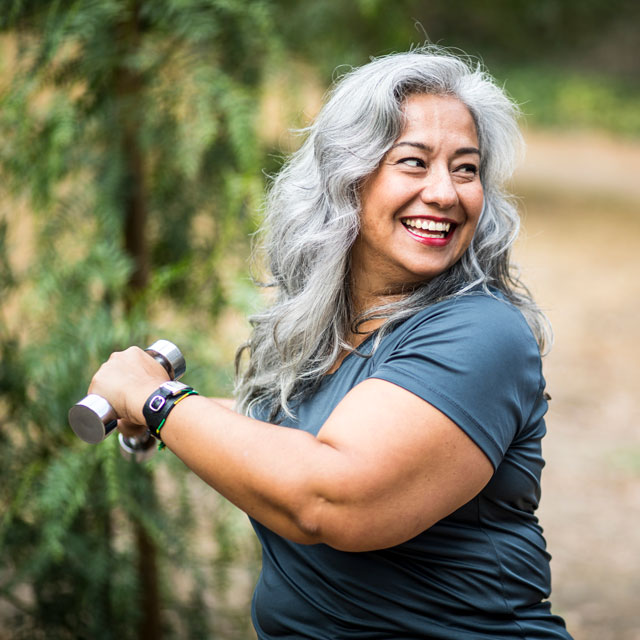It’s critical to know if we need to seek treatment for obesity — but what’s the best way to measure?
For the past 50 years or so, the most common method for determining obesity has been the body mass index (BMI). It’s a simple calculation of weight divided by height squared. The normal range is 18.5 to 24.9 kg/m2 — anything above or below is cause for concern, especially if your BMI is over 30, which puts you into obesity territory and gives you a higher risk of a range of diseases, including heart disease, diabetes and cancer.
More recently, however, BMI has come under scrutiny. Critics say it’s not as accurate as it should be and that, because it was developed based on research primarily of white men, it fails to take into consideration other populations and body types. It also fails to factor in where a person’s extra fat is stored on their body.
“There’s been a growing realization that our visceral fat, the fat that we carry in our abdomen, is probably more metabolically active, so it likely plays a bigger role in terms of someone’s risk for diabetes or heart disease,” said Dr. Jason Samuels, a bariatric surgeon with Vanderbilt Weight Loss Center. “And so there’s been a growing desire to come up with measures that better evaluate someone’s visceral fat.”
Body roundness: A better alternative to BMI?
Enter the body roundness index, first introduced in 2013, which factors in a person’s waist circumference along with their weight/height ratio. This, in theory, makes it a better measure of visceral fat and, therefore, of risk for fat-related medical conditions.
Unfortunately, said Samuels, that isn’t necessarily the case.
“We’re talking a few percentage points difference in terms of being able to predict things like diabetes, heart disease and early mortality,” he said. “And so it’s not a major advancement compared to BMI.”
It’s also harder to measure. BMI is easy to figure out; if you don’t feel like doing the math yourself, automatic calculators abound online. To calculate a body roundness index, you need to take the waist circumference measurement at a very precise location on a person’s body. This can be hard to find if a patient is wearing baggy clothes or has mobility issues, and many clinicians haven’t been trained in how to do it.
Other ways to calculate body fat
There’s an inverse relationship, Samuels said, between ease of calculating obesity and precision of those calculations. BMI is at the bottom of the scale, followed by body roundness. Next is a DXA scan, which measures a person’s entire body composition, including total fat mass, skeletal mass and visceral fat. And at the top, the gold standard, is an MRI. But both scans would require a trip to a specialized imaging center, which can be very costly.
If you’re worried about obesity, talk to your doctor.
The best way to proceed, said Samuels, is to have an honest conversation with your primary care physician, one that includes a discussion of potential risk factors, like family history or changes in their lab results, like high blood pressure or elevated blood sugar.
“Primary care physicians are sometimes hesitant to even bring up obesity for fear of potentially upsetting the patient, which is understandable,” he said. “There’s a lot of stigma around obesity and primary care physicians are certainly capable of identifying when obesity potentially necessitates or absolutely necessitates treatment.”
That point, said Samuels, is when a patient’s BMI hits 40 or above, and then there’s a variety of options for treatment, both surgical and medical.
“I think with the growing list of treatment options,” he said, “we need to involve patients and primary care clinicians in having those conversations.”

Help with weight loss
The Vanderbilt Weight Loss Center provides comprehensive, personalized care to help patients achieve and maintain their weight loss goals. Vanderbilt’s board-certified doctors are specially trained and experienced in all aspects of weight loss, partnering with a team of nurses, dietitians, exercise physiologists and psychologists to tailor treatment plans to meet each patient’s unique needs and health goals.




